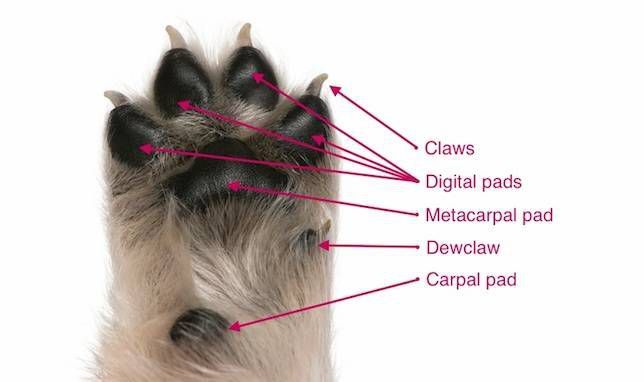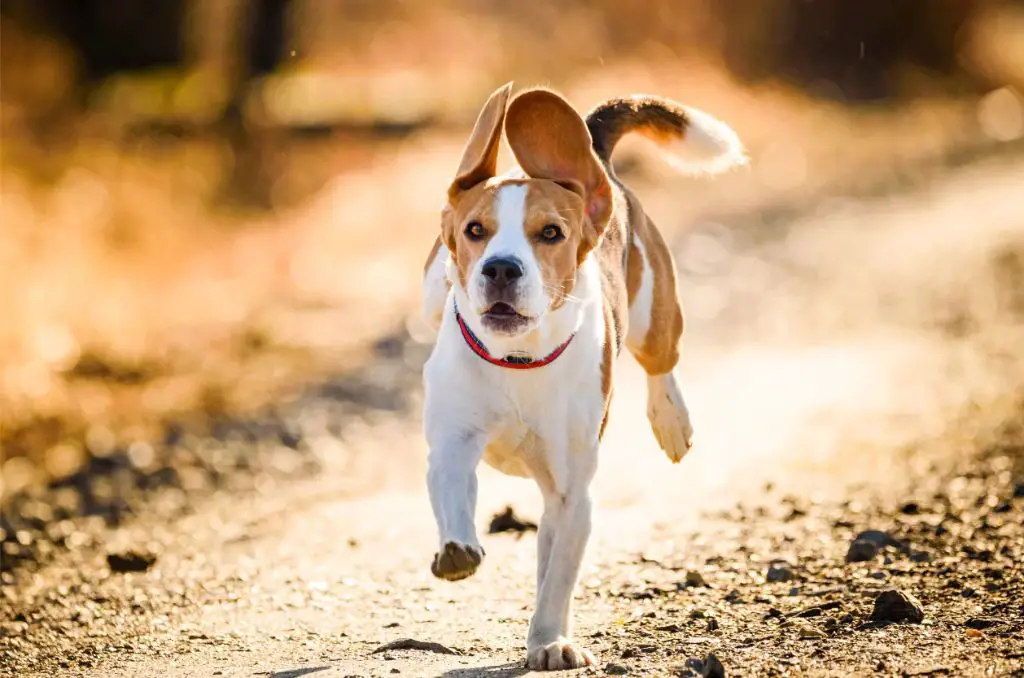Introduction
A dog’s paws are its most important means of getting around and interacting with the environment. The pads on the bottom of a dog’s paws serve as shock absorbers and provide traction and grip. However, many dogs have sensitive paws that can get injured or irritated by hot pavement, rough terrain, snow, ice, salt, and more.
Toughening up a dog’s paws is an important part of maintaining their health, mobility, and comfort. Dogs that frequently walk on different surfaces like pavement, trails, grass, etc. will naturally develop calluses and thicker pads over time. But for dogs that mainly stay indoors on soft surfaces, their paws may remain tender and vulnerable.
Taking steps to gradually expose your dog’s paws to various textures and mild irritants can condition them over time. Tougher paw pads provide padding and resilience against abrasions, burns, cuts and enable a dog to confidently walk on any terrain. Properly conditioned paws will ensure your dog can play, exercise and explore without pain or injury to their feet.
Anatomy of Dogs’ Paws
A dog’s paws are complex structures that serve many important functions. The underside of a dog’s paw is covered in specialized pads that provide traction and help absorb shock.
There are three main types of pads on a dog’s paw:
- Digital pads – These are the heart-shaped pads on the underside of each toe. They provide traction and help absorb impact from walking and running on hard surfaces.
- Metacarpal pads – These are the two thick pads at the back of the paw behind the toes. They provide additional shock absorption and stability.
- Carpal pads – This single pad is located at the very front of the paw right below the wrist joint. It helps provide cushioning and grip.

Together, the digital, metacarpal, and carpal pads on the bottom of a dog’s paws allow them to walk, run, and jump on a variety of surfaces. The pads help protect the bones, joints, and soft tissues of the paw by absorbing much of the impact from ground contact.
When to Toughen Your Dog’s Paws
There are a few key times when you may want to take steps to toughen up your dog’s paw pads:
As a Puppy: Starting paw pad conditioning when your dog is young sets them up for success later in life. Begin taking them on short walks on a variety of surfaces as soon as they have had their puppy shots. Slowly increase the time and distance as they grow. Get them used to having their paws handled from day one.
Before Hiking/Trail Running Season: If you plan to take your dog on longer hikes, trail runs, or overnights in the backcountry, spend time toughening their paws for several weeks beforehand. Start slow and gradually build up the distance, time, and terrain to allow their paw pads to develop protective calluses.
If Dog is Showing Signs of Tender Paws: If your dog is hesitating to go on walks, limping, or licking/biting at their paws, it’s time to strengthen their pads. Rule out any medical issues first, then start a conditioning regimen appropriate for their individual needs.
Methods to Toughen Paws
There are a few effective methods you can use to help toughen your dog’s paws over time:
Walking on Different Surfaces
One of the best ways to toughen the pads on your dog’s paws is to regularly walk them on different surfaces. Take your dog for walks on pavement, gravel roads, grass, and dirt trails. Exposing their paws to varied textures will help build calluses and resistance over time.

Start gradually if your dog is used to only grass or soft surfaces. Mix up the textures and aim to increase the proportion of walks on rougher terrain. Be sure to monitor for any signs of irritation or discomfort.
Paw Waxes and Balms
There are various paw waxes and balms made specifically for conditioning dogs’ paw pads. These are formulated to moisturize and protect the pads while also promoting tissue toughening. The thick wax creates a barrier and mildly abrasive film that will gradually improve pad durability.
Apply the wax or balm thoroughly over the pads, reapplying every few days. This helps supplement the effects of terrain walks. Look for products with natural ingredients like beeswax, shea butter, vitamin E, and coconut oil.
Massaging the Paws
Gently massaging your dog’s paws can increase pad flexibility and circulation. Use your fingers or a soft brush to lightly massage the pads in a circular motion. Go slowly and watch for any signs of discomfort.
Aim for short, daily paw massages. The stimulation will help condition the tissue. Massage can be used together with terrain walks and paw balms for compounding benefits.
Walking on Different Surfaces
One of the best ways to toughen your dog’s paws is to walk them on a variety of surfaces. Each surface type can help condition the paw pads in different ways.
Concrete/Asphalt
Walking on hard, flat surfaces like concrete and asphalt is great for building up calluses on paw pads. Start with short distances and work up to longer walks as your dog’s paws toughen. The unforgiving texture forces paw pads to adapt. Monitor for signs of tenderness.
Gravel
Loose gravel provides an unstable walking surface that forces paw pads to grip. This tones the muscles and ligaments in the paw structure. Begin with softer gravel and incrementally introduce rougher gravel. Don’t overdo it, as very sharp gravel can damage paw pads.
Grass
Grass allows paws toboth flex and develop grip strength. The varied texture also lightly conditions the pads. Start on manicured lawns before progressing to rougher grass and underbrush in natural areas. Avoid foxtails, thistles, and other vegetation that can get trapped between toes.
Sand
Walking on sand, especially soft sand, builds strength in paw muscles and ligaments as they work to stabilize on the shifting surface. It also promotes flexing of the toes and paw. Introduce gradually, as excessively soft or hot sand can scald tender paws. Compacted sand is gentler.
Paw Waxes and Balms

There are a variety of paw waxes and balms made specifically for protecting and conditioning dogs’ paws. These products create a protective barrier over the paw pads and keep them from getting chapped or irritated. Some key things to look for when selecting a paw wax or balm include:
Beeswax or Lanolin – These natural waxes help seal in moisture and prevent cracking. They also form a breathable barrier to protect against hot pavements or chemically treated grass.
Soothing Oils – Natural oils like coconut, olive, hemp seed, and vitamin E provide hydration and smooth away roughness. They should absorb well without being greasy.
Antibacterial Ingredients – Some balms contain antibacterial elements like tea tree oil to prevent infection from small cuts or abrasions.
When applying a paw balm or wax, make sure to rub thoroughly between the toes and pads. Reapply every few hours if doing a long walk on rough terrain. Regular use will help strengthen paws against damage while providing much-needed moisture and protection.
Massaging the Paws
Massaging your dog’s paws is a great way to toughen them up while providing other benefits as well. Massage improves circulation in the paws, which brings more blood flow to help strengthen the tissue. It also helps desensitize the paws to touch and pressure. Some key techniques to use when massaging your dog’s paws:
– Gently knead the paw pads using your thumbs or fingers in a circular, pressing motion.
– Take each toe and gently squeeze and rub from base to tip.
– Make sure to massage between the toe pads as well.
– You can massage with paw balm or coconut oil to moisturize the pads too.
– Focus on massaging any cracked or dry areas.
– Massage each paw for 30-60 seconds if your dog will tolerate it.
Make paw massages a fun part of playtime. Give your dog praise and treats while doing it so they associate it with positive experiences. Over time, regular paw massages will get your dog comfortable having their paws handled in preparation for tougher surfaces.
Signs of Tender Paws

Watch for these signs that indicate your dog’s paws are tender and need more conditioning before toughening them further:
Limping/Holding Paw Up
If your dog starts limping or holding one paw up, it likely means the pads on that paw are cracked or irritated. Let the paw rest and heal before continuing to walk on rough surfaces.
Licking Paws Excessively
Constant licking and chewing at paws is a sign of irritation. The scratchy tongue can further aggravate cracked pads.
Cracked Pads
Check pads daily when toughening. Cracked pads need time to heal before exposing them to more abrasive surfaces.
Bleeding
Bleeding is a sign to stop immediately and allow paws to recover. Only reintroduce walks on gravel, pavement, etc. once bleeding has stopped and pads are healed.
Potential Risks
While there are many benefits to toughening your dog’s paws, owners should be aware of some potential risks.
Overdoing walks on hard surfaces like concrete or asphalt can lead to abrasions, blisters, cracks or cuts on your dog’s paw pads. It’s important to build up slowly, starting with short sessions on hard ground. Watch for signs of discomfort or sensitivity.
Some dogs may have allergic reactions to ingredients in paw balms or waxes. Reactions can include redness, itching, swelling or rashes on the paws. Discontinue use of any product that causes irritation. Always spot test first.
When massaging your dog’s paws, take care not to apply too much pressure or rub too aggressively. This can potentially strain joints or ligaments. Massage gently in a kneading motion, stopping if you see any sign of discomfort.
With some simple precautions, you can safely toughen your dog’s paws for better protection. Just make sure to increase difficulty gradually, watch for any adverse reactions, and don’t overdo it. A little conditioning goes a long way.
Conclusion
Dog paws have evolved to withstand rough surfaces, but that resilience must be gradually developed. Attempting to toughen their paws too quickly can damage the tissues and pads. Remember to gradually increase the amount of time spent walking on tough surfaces, closely monitoring your dog’s comfort level. If they show signs of tender paws, take a break and try again another day. With patience and care, you can help build up your dog’s natural protections. Robust paws will keep them active and comfortable on almost any terrain.
Start on softer ground before progressing to rockier surfaces. Place booties on their paws if they seem sore or sensitive. And never force a dog to walk further than they can handle. With time and incremental training, those paw pads will become leathery and tough, able to handle more intensive hikes and adventures.
Toughening a dog’s paws expands the possibilities for outdoor fun. But go at their pace, read their signals, and make the process positive. By gradually exposing them to new elements in a controlled way, you’ll give those paws the resilience to explore all of life’s trails and paths together.